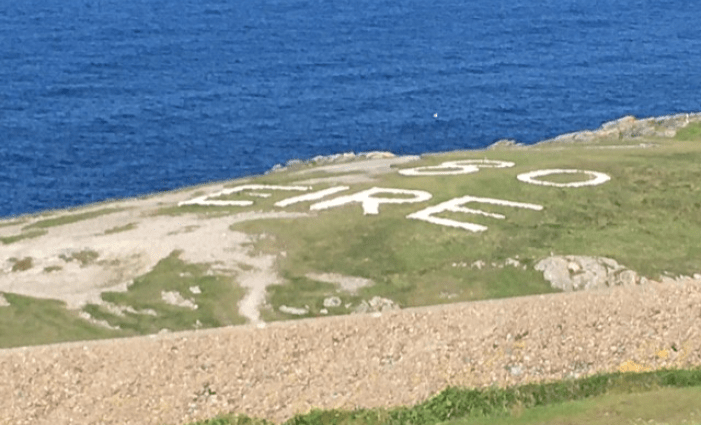
The country I live in is called Ireland. Not The Republic of Ireland, officially, just Ireland. When President Higgins made a state visit to the UK a few years ago he was welcomed as the President of Ireland in recognition of the country’s official title. The anomalous position of that tricky north-eastern portion of the island which is not under the President’s jurisdiction does not interfere with ceremonial. Sometimes you will hear Ireland referred to as The Republic of Ireland, in order to make that distinction clear, but never as The Irish Republic, which was a short-lived designation for the revolutionary state that began with the Easter Rising in 1916 and continued until it became the Irish Free State in 1922. That newer name is no longer in use either – the Irish Free State was technically a Dominion of the British Commonwealth and was discontinued in 1931 when the country became the truly independent republic just called Ireland.
However, as we know, six of the thirty-two counties of Ireland are outside the country of Ireland, or the State (not the Free State) as it is sometimes known, so you will also hear people refer to the twenty-six counties and the six counties, as well as to the four provinces; Leinster, Munster, Ulster and Connaught. The six counties are of course in Ulster, but it would be wrong to refer to them collectively as Ulster, because three of the nine counties of the province of Ulster are in Ireland; Cavan, Monaghan and Donegal. The UK news used to refer to Northern Ireland as The Province, but that seems to have gone out of fashion in the UK, and was probably never popular on this side of the Irish Sea. So that north-east corner is Northern Ireland (or Tuaisceart Éireann as it is called in Irish) although the most northerly point in Ireland, Malin Head, is not in Northern Ireland at all, but in Ireland. There are places near Derry, or Londonderry as it is not called here in the State, where you have to travel south to get to the North, and north to get to the South, but if you refer to the two jurisdictions as The North and The South, that will say something important about your political persuasions. The nationalist party Sinn Fein recently referred to Northern Ireland as The North of Ireland and caused a kerfuffle; conversely the leader of the Unionist DUP recently referred to President Higgins as the President of the Republic of Ireland, so I suppose the insults have evened themselves out.
Although there is such a thing as Northern Ireland, don’t ever use the term Southern Ireland. That was a term used to refer to the twenty-six counties that weren’t Northern Ireland after partition in 1920, but it was supposed to also continue as a British dominion with a parliament in Dublin. The parliament of Southern Ireland met once, but only four of the elected representatives turned up, because everybody else wanted an independent parliament and the Irish Free State was declared, as outlined above.
The official languages of Ireland are English and Irish. The language is not called Gaelic if you refer to it in English, it’s Irish, so you can’t forget that it is intimately woven through with the identity of the country and the people. Of course when you are speaking in Irish, the language is referred to as Gaeilge, and each area of the country where Irish is predominant is known as An Gaeltacht. In Irish, the name of the country is Éire. Don’t use Éire if you are referring to the country in English, when it’s absolutely Ireland. Of course, a lot of names changed when Ireland ceased to operate under the British crown. King’s County was renamed Offaly, and Queen’s County became Laois. However the people who save lives at sea are still the Royal National Lifeboat Institution and the waterway that connects the Liffey with the Shannon is still the Royal Canal.
The Gaelic Athletics Association, which isn’t called the Irish Athletics Association, even in English, covers three sports: Gaelic Football, which is not called Irish football, even in English (although English football is sometimes called Soccer here) plus Hurling, and Camogie, which is essentially Hurling for Girls. The GAA, or “the Gah” as it is often known, operates on a county basis and all thirty-two counties play in it, which is kind of a handy number for knockout tournaments. It therefore operates on an All-Ireland basis, which may be the best way of referring to what is clumsily called The Island of Ireland.
Anyway, I hope that is all perfectly clear. Here in Ireland the names you use matter; they can reveal a lot about your politics, whether you are living in the past, and if so, which part of the past you might be living in.
Read more by Judi Sutherland
Please follow us on social media, subscribe to our newsletter, and/or support us with a regular donation


